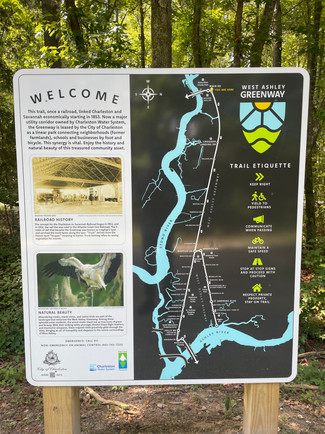BIRDS & Beauty at the end of the West Ashley Greenway
- birding211
- Jun 27, 2024
- 3 min read
The "West" end of the West Ashley Greenway is a beautiful spot to appreciate nature especially birds! The former railway intersects the majestic tidal marsh providing an ever changing wetland landscape. This thriving ecosystem provides sanctuary and food for a great variety of birds. During the summer months two very colorful and intriguing birds are attracted to this special location. The Painted Bunting and Roseate Spoonbill are always exciting to spot along this final stretch of the 8 mile long Greenway.








This tidal marsh habitat which is adjacent to the Stono River attracts nearly all of Charleston's wading birds. Herons, Egrets, Ibis, & Spoonbills can all be found foraging at different tide levels for their preferred foods which include fish, crustaceans, and aquatic invertebrate.





Roseate Spoonbills will use their unique spoon shaped bills to find shrimp, aquatic insects, and fish in shallow waters. The tidal marsh surrounding this section of the Greenway offer the right water depth for these amazing pink birds to successfully forage for their favorite foods.


One of the most colorful songbirds we have in North America is the Painted Bunting and they thrive in the scrubby areas near the marsh habitat. The Greenway is a great location to listen for singing males that will perch on conspicuous branches to project their lovely whistled songs. Young males can still have greenish feathers so they can be more challenging to locate when compared to the incredibly striking mature male with its bright blue, red, green and yellow feathers.



At lower tides the muddy flats can become resting areas for flocks of Laughing Gulls, Wood Storks, and other bird species.



The lower tide can also provide a look at the secretive Clapper Rail. These marsh birds mostly remain hidden in the Cordgrass. Once in a while they can be seen walking along the edge or scurrying across the mud to another patch of grass or even washing & preening their feathers in the shallow water.

With forest edges, maritime vegetation, and marsh grass, the West Ashley Greenway offers an excellent habitat for a diverse range of songbirds.





In early June I observed several Blue-gray Gnatcatcher nests including this one that appeared to have a larger juvenile bird that was very vocal. The juvenile in this nest seems to be a Brown-headed Cowbird that has successfully hatched in a Blue-gray Gnatcatcher nest. This is the first time I have witnessed the "brood parasitic" behavior of the Brown-headed Cowbird. It is thought that this survival instinct originated during a time when vast herds of buffalo roamed much of our country. These nomadic herds would consume all the vegetation in an area before moving on. Following the buffalo, cowbirds also had to adopt a nomadic lifestyle, preventing them from settling down to raise their own offspring.
The flourishing habitat along the final stretch of the Greenway has also attracted the iconic Bald Eagle.


This scenic Charleston City Park showcases the wonderful tidal marsh habitat that surrounds the Holy City. I would recommend a visit whether you are looking for birds or just want to enjoy the outdoors. The end of the West Ashley Greenway is one of my favorite parks in Charleston!
Happy Birding
-Charles
Holy City Birding offers a seasonal guided tour to explore the end of the West Ashley Greenway and search for Painted Buntings & Roseate Spoonbills.
Use coupon code BUNTING for 20% OFF!
Tour Dates:
July 10, July 11, July 12
July 27
August 13, August 14
August 26, August 27, August 28
.png)








































































Wow! I love the West Ashley Greenway, by far one of my favorite birding spots.
I tried walking the greenway last year during the beginning of summer and I couldn't walk even a mile with the heat and blazing sun. What do you recomend is the best month temp wise to go there, when maybe some spoonbills and buntings are still there?
Thank you for sharing photos of the beautiful birds of West Ashley!